The Leading Edge: March 2024 Wind Energy Newsletter
In this issue, NREL shares offshore wind energy news, distributed wind energy resources, the unexpected story of a researcher, and more.
Upwind: Featured News
Researchers Provide Critical Insights To Bring Offshore Wind Energy to Communities on the East Coast
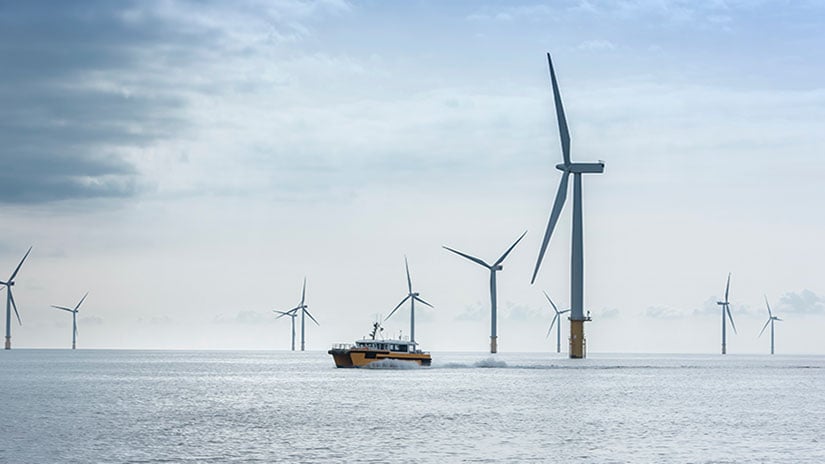
Researchers at NREL and the Pacific Northwest National Laboratory have spent 2 years evaluating transmission options to make the best possible connections between offshore wind projects and communities on the Atlantic Coast. Now, the Atlantic Offshore Wind Transmission Study team, with funding from the U.S. Department of Energy’s Wind Energy Technologies Office, has identified ways to bring offshore wind energy to areas of high demand via transmission lines. Their plan could help reduce grid congestion, increase reliability, maximize production, and lower costs for consumers. The study also informed the Atlantic Offshore Wind Transmission Action Plan, which was released concurrently with the study and outlines immediate actions the United States can take to connect the first generation of Atlantic offshore wind projects to the electric grid and how the country can increase transmission over the next several decades.
Before You Install Wind Energy Technology, Check Out This Database
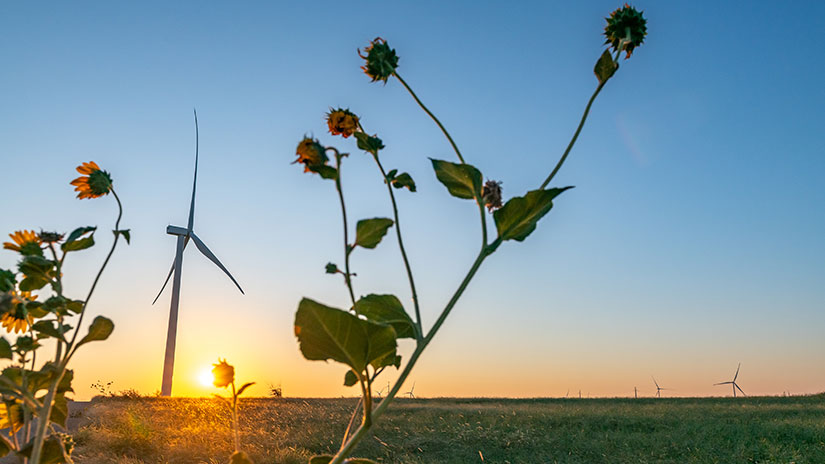
NREL has launched the Wind Resource Database, an online platform that provides public access to massive amounts of data on the atmospheric forces that affect wind turbine performance, inform wind power plant development, and increase energy capture. The platform offers more than a petabyte of detailed wind resource data covering the United States and other countries, which can help developers identify ideal sites for wind farms. Designed for a diverse audience, the Wind Resource Database includes interactive maps and a simplified data retrieval process, providing a user-friendly experience—all at no cost.
New National Network and Resource Hub Guide Decisions About Distributed Wind Energy Deployment
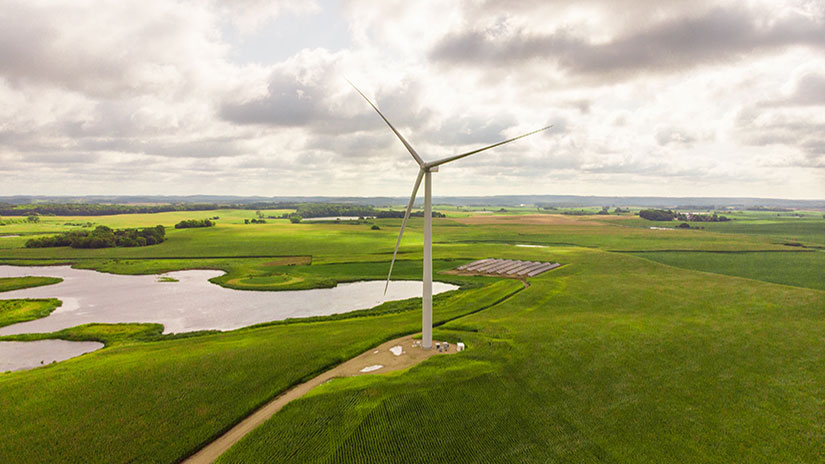
New resources are providing comprehensive information, tools, and support to anyone interested in installing distributed wind turbines and taking advantage of the benefits of on-site energy. The National Distributed Wind Network and its complementary Distributed Wind Resource Hub were created by NREL in partnership with PNNL and funded by the Wind Energy Technologies Office.
The network offers support and informational resources about distributed wind, and the resource hub features a directory of objective, fact-based distributed wind information and tools.
An initial focus of the National Distributed Wind Network will be to support the new Rural and Agricultural Income & Savings from Renewable Energy initiative, which was created by DOE and the U.S. Department of Agriculture to help farmers cut costs and increase income from clean energy—with the ultimate goal of getting more distributed wind turbines deployed across the country.
Behind the Blades
Amy Robertson Takes on the Complexities of Floating Offshore Wind Energy
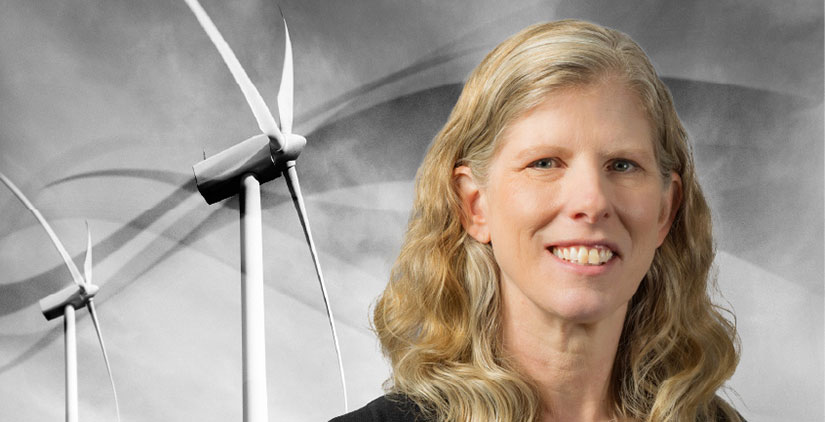
As a kid growing up in Clear Lake City, Texas, home of the Johnson Space Center, Amy Robertson was immersed in what was happening at the National Aeronautics and Space Administration. Just about everybody she knew—including her dad—either worked there or had parents who did. So it made perfect sense that, as a kid, she dreamed of joining the space industry.
But not, she emphasizes, as an astronaut. When her dad brought her to work and let her try out the astronaut-training centrifuge, she threw up. And when Alan Shepard visited her classroom and demonstrated how astronauts use the restroom in space, she was officially out. (“Who wants to do that stuff?” Robertson thought.)
Robertson did pursue her space dreams, though, ultimately earning a Ph.D. in aerospace engineering. But the best use of her skills and education seem to be right here on Earth, as offshore wind energy group manager at NREL.
“I was the first person hired at NREL that was devoted to offshore wind,” Robertson said. “But I had no experience in wind! None.” Luckily, that degree in aerospace engineering came in handy. “I'm a structural person, and the crazy thing about floating wind is that it's a structures problem. It's a wind aerodynamics problem, and it's a hydrodynamics problem, too. Finding someone who's an expert in all three is almost impossible.”
So, in 2010, Robertson took her structural experience and her love of a challenge and applied it to the nascent field of offshore wind energy. We caught up with her to find out more about her journey before coming to NREL—and why it’s been an exciting ride ever since. Read the full interview.
On the Radar: Project Updates
Big Adaptive Rotor Program Enters New Phase of Research
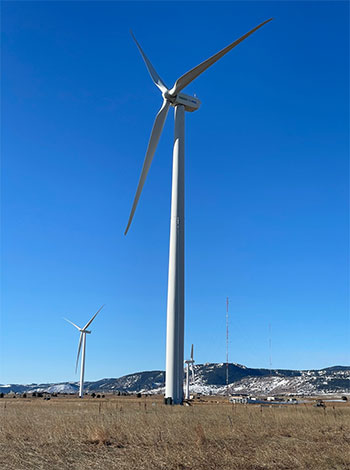
NREL’s Big Adaptive Rotor project, now in its second phase, seeks to narrow gaps in modeling that could otherwise result in performance and safety issues for wind turbines. The research, led by NREL’s Pietro Bortolotti, characterizes the aeroelastic behavior of modern wind turbine blades. The team recently flipped the blades of a 1.5-MW turbine on NREL’s Flatirons Campus to gather data on how it performs in downwind mode. Operating a turbine in this way generally requires lighter and less costly blades, can produce more power in large wind farms, and may be promising for floating offshore wind energy applications. The Technical University of Denmark, a partner on the project, will also be on-site in April to install pressure belts to characterize the aerodynamics of the rotor. The goal of the research is to generate a unique dataset to validate noise and aerodynamic models of the turbine in both upwind and downwind configurations. Project completion is expected by May 2024.
NREL Study Documents Effects of Wind Loads on Solar Collectors
The effects of wind loads are an important consideration when designing concentrating solar-thermal power collectors, as the devices must be able to withstand strong winds while ensuring their reflective surfaces are working optimally. To study wind’s effects on these collectors, an NREL research team conducted comprehensive field measurements over a 2-year period of the atmospheric turbulent wind conditions and the resulting structural wind loads on the parabolic troughs at the Nevada Solar One plant. This first-of-its-kind dataset will enhance the understanding of wind loading on collector structures and help design the next generation of solar collectors and photovoltaic trackers. The data were published on the Open Energy Data Initiative and documented in an article in Scientific Data.
Downwind: In Case You Missed It
International Researchers Explore New Territory in the Grand Challenges of Wind Energy Science
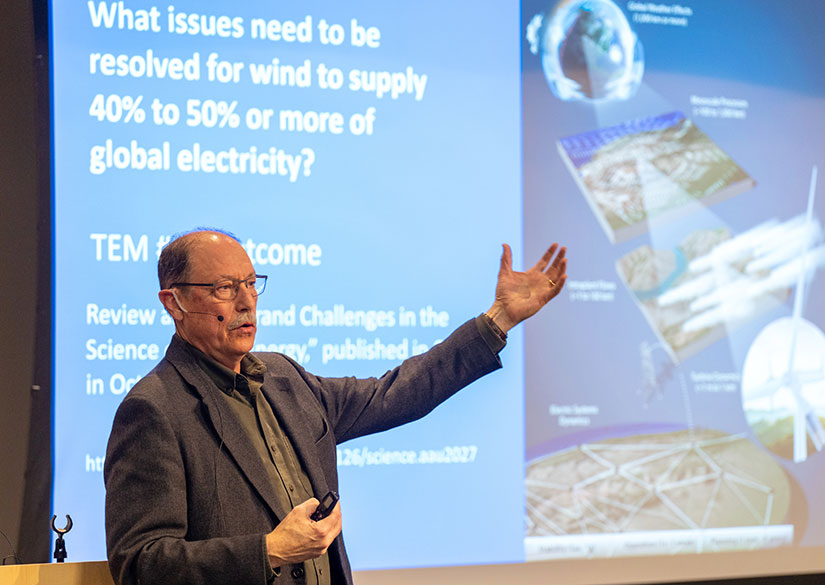
Wind energy will play a key role in the transition to a carbon-free energy system. However, its growth will require the global wind energy community to tackle five “grand challenges.” These challenges, which are outlined in the new NREL report Grand Challenges Revisited: Wind Energy Research Needs for a Global Energy Transition, include atmospheric physics, turbine technology, wind plant and grid integration, and social and environmental impacts. To further explore these challenges and their intersections, NREL wind energy researchers convened an International Energy Agency Wind Energy Topical Expert Meeting in February 2023. The new report summarizes the key findings from that meeting and is the basis for a 5-year roadmap for international collaborative research to help enable wind energy to fulfill its role in the clean energy transition.
Skills-Building Collegiate Wind Competition Seeks Next Round of Applicants
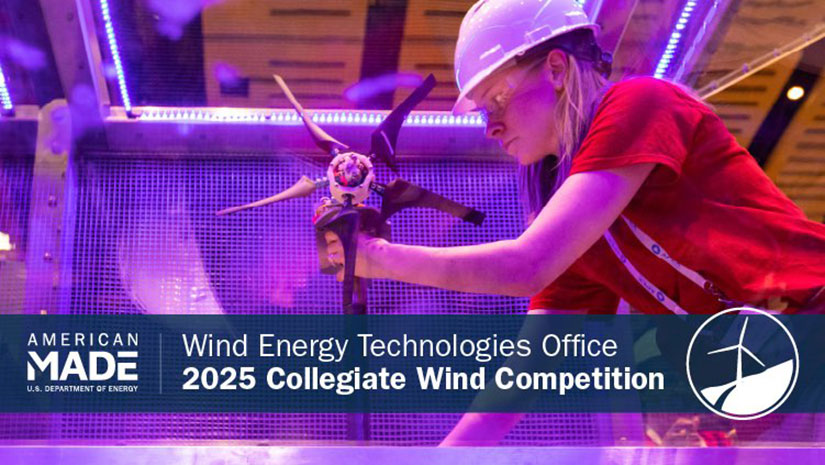
Applications are now being accepted for DOE’s 2025 Collegiate Wind Competition, an annual competition managed by NREL that provides college students with an opportunity to build the skills and connections that will help them find jobs in the wind and renewable energy industries. Competitors will have a chance to win prizes at each phase from a total prize pool of $280,000. The deadline to submit applications is June 13, 2024.
Meanwhile, the final event of this year’s competition is taking place this May 2024. The event, which will be held in conjunction with the American Clean Power Association’s CLEANPOWER Conference and Exhibition in Minneapolis, Minnesota, is open to CLEANPOWER attendees and is a great place to meet the next generation of wind energy professionals.
Upcoming Events, News Mentions, Recent Publications
Upcoming Events
2024 International Partnering Forum
April 22–25, 2024, New Orleans, Louisiana
Join NREL and Wind Energy Technologies Office researchers at the annual International Partnering Forum, hosted by Oceantic Network, formerly the Business Network for Offshore Wind. This offshore wind energy conference will include panels and presentations from DOE, NREL, and other national laboratories.
CLEANPOWER 2024 Conference and Exhibition
May 6–9, 2024, Minneapolis, Minnesota
The American Clean Power Association’s annual conference will feature panels, presentations, workshops, and poster sessions on the renewable energy industry, including land-based, offshore, and distributed wind energy; solar power; energy storage; and transmission.
2024 Collegiate Wind Competition
May 6–9, 2024, Minneapolis, Minnesota
Managed by NREL on behalf of DOE, the 2024 Collegiate Wind Competition final event will be held in conjunction with the American Clean Power Association's CLEANPOWER 2024 Conference and Exhibition. See the top 12 teams representing colleges and universities across the United States who will compete for the grand prize.
News Mentions
New Resources Spotlight Distributed Wind Energy’s Local Value, CleanTechnica, March 10, 2024
U.S. Counties Are Blocking the Future of Renewable Energy: These Maps, Graphics Show How, Elizabeth Weise, Stephen J. Beard, Suhail Bhat, Ramon Padilla, Carlie Procell, Karina Zaiets, Des Moines Register, March 4, 2024
NREL Request Proposals From U.S. Manufacturers of Small and Medium Wind Turbine Technology, WindTech International, Feb. 28, 2024
Recent Publications
Analysis
Causes of and Solutions to Wind Speed Bias in NREL's 2020 Offshore Wind Resource Assessment for the California Pacific Outer Continental Shelf, NREL Technical Report (2024)
Feasibility Study for Renewable Energy Technologies in Alaska Offshore Waters, Bureau of Ocean Energy Management Technical Report (2023)
Techno-Economic Analysis of Renewable Energy Generation at the South Pole, Renewable and Sustainable Energy Reviews (2024)
The Value of Wake Steering Wind Farm Flow Control in U.S. Energy Markets, Wind Energy Science (2024)
Stakeholder Engagement
Expanding the Baseline: Community Perspectives on Equity in Land-Based Wind Energy Development and Operations, NREL Technical Report (2024)
Technology and Modeling
A Digital Twin Solution for Floating Offshore Wind Turbines Validated Using a Full-Scale Prototype, Wind Energy Science (2024)
An Envelope Time Synchronous Averaging for Wind Turbine Gearbox Fault Diagnosis, Journal of Vibration Engineering and Technologies (2024)
ExaWind: Open-Source CFD for Hybrid-RANS/LES Geometry-Resolved Wind Turbine Simulations in Atmospheric Flows, Wind Energy (2024)
Identifying Meteorological Drivers for Errors in Modeled Winds Along the Northern California Coast, Monthly Weather Review (2024)
Stochastic Economic Dispatch of Wind Power Under Uncertainty Using Clustering-Based Extreme Scenarios, Electric Power Systems Research (2024)
Want More?
Subscribe to The Leading Edge newsletter, and explore the latest news and accomplishments in wind energy at NREL.
Share
Last Updated Nov. 17, 2025
